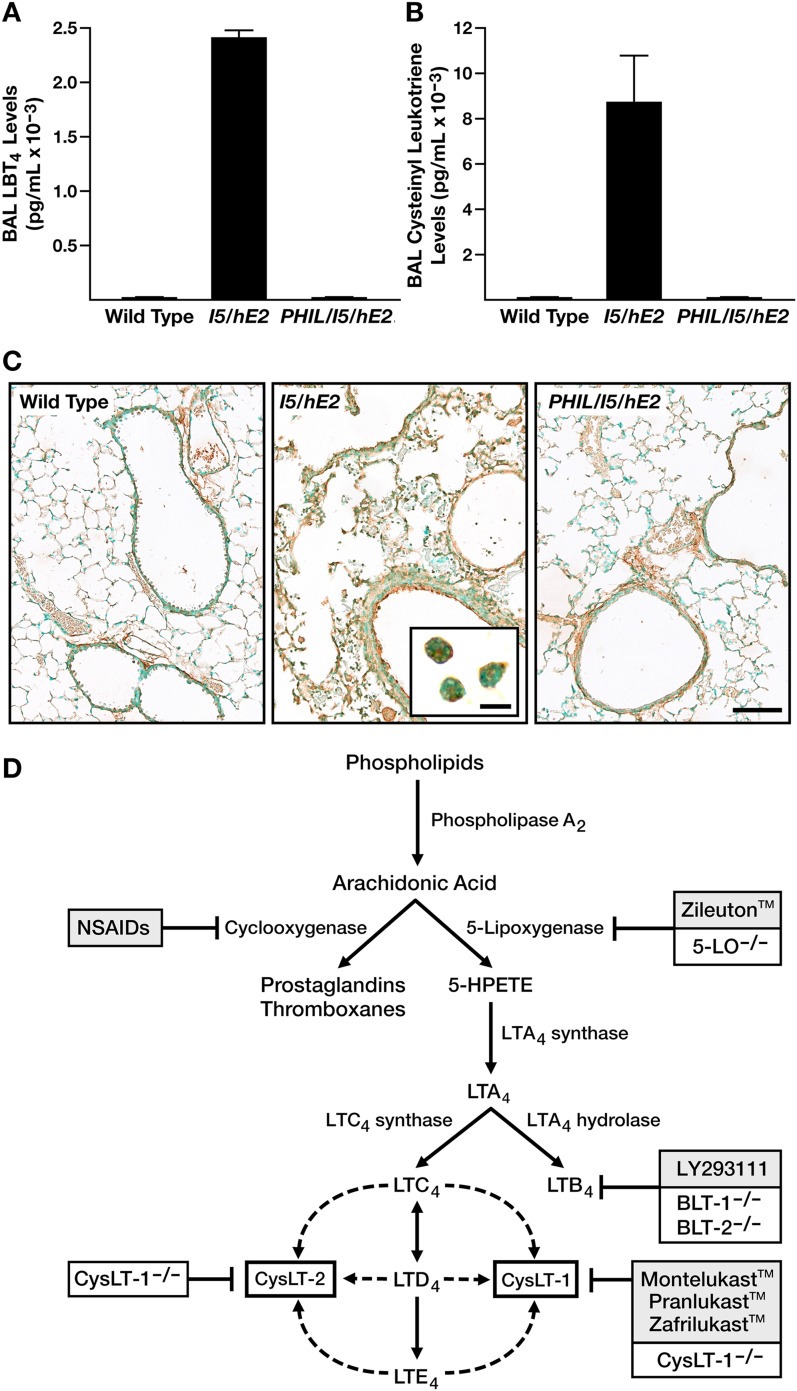Figure 3.
The eosinophil-mediated chronic pulmonary inflammation that occurs in I5/hE2 mice is accompanied by significant increases in both airway cys-leukotriene and leukotriene B4 (LTB4) levels, leading to experimental strategies targeting leukotrienes. The levels of (A) LTB4 and (B) cys-leukotrienes in cell-free bronchoalveolar lavage fluid were assessed by ELISA from wild-type (C57BL/6J), I5/hE2, and eosinophilless PHIL/I5/hE2 transgenic mice (n = 5–8 mice/group; *P < 0.05). Data presented are means (± SEM). (C) Immunohistochemistry (brown staining areas/cells) of lung sections from wild-type (C57BL/6J), I5/hE2, and eosinophilless PHIL/I5/hE2 mice demonstrated that the eosinophil-mediated events in I5/hE2 mice were also accompanied by increases in Cys-leukotriene receptor (cysLTR1) expression that appeared to occur in several lung compartments (scale bar, 100 μm), including the infiltrating eosinophils themselves (see insert; scale bar, 20 μm). (D) Schematic flow diagram reviewing the synthetic pathways leading to the production of arachidonic acid metabolites and the drug strategies in humans and gene knockout approaches in mouse models targeting each of these pathways. BLT-1−/− and BLT-2−/−, knockout mice targeting the LTB4 high- and low-affinity receptors, respectively; CysLT-1−/− and CysLT-2−/−, cys-leukotriene high- and low-affinity receptor knockout mice; 5-LO−/−, 5-lipoxygenase knockout mice; NSAIDs, nonsteroidal anti-inflammatory drugs.

